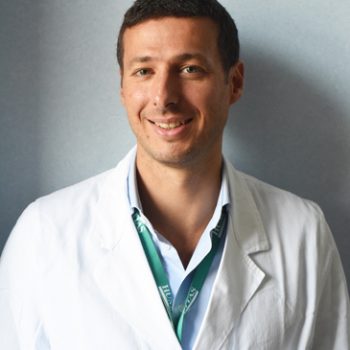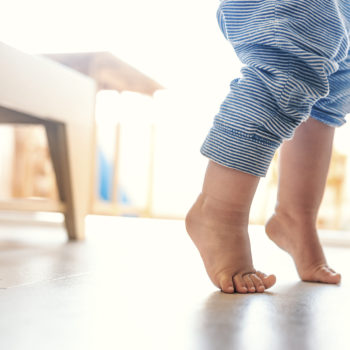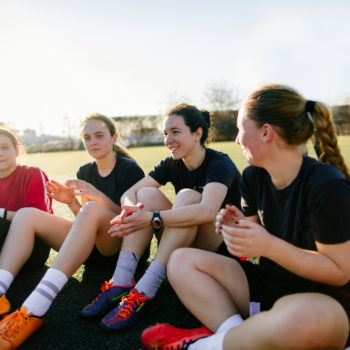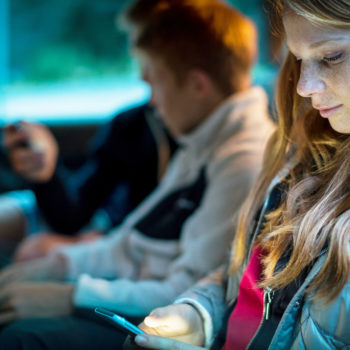In the first six months of 2017, US companies invested $3.5 billion in health digitization. A record, both for the amount put in place, and for the number of new companies that have decided to enter this sector in constant growth throughout the industrialized world. That’s why science and technology are increasingly on the same wavelength and in the medical field, technological innovation is taking ever greater steps: from diagnostic techniques for images to the possibility of printing biological tissues in 3D, from artificial intelligence capable of performing tasks performed so far by health professionals, to the simplest apps (professional or not) to monitor vital parameters and to help lose weight. We discussed the “digital health trend” with Dr. Marco Nuara, pediatrician at Humanitas.
Lose weight with mobile health apps
Apps that help us lose weight can do a lot of things: from sending personalized messages (via text message or e-mail) to remember and motivate the goals you have set yourself, to even comment on the results obtained. A system of this kind can certainly help. Several studies have shown that the constant use of apps to reduce excess weight sometimes helps to achieve a greater weight loss if the program is placed in a clinical context and followed by a nutrition specialist. Mobile Health is therefore potentially a great contribution, provided that the dedicated apps are rigorously designed and scientifically validated and that the person who has to lose weight is always monitored by a dietician in his slimming program. It is important to stress that no technological device will ever be able to replace the figure of a specialist. It is important to underline this in view of the constant growth of this phenomenon if, according to a study conducted by the National Committee of Bioethics, has reached 100 thousand applications in the market for the category “Health & Fitness”. This constantly growing category includes all applications designed to control lifestyle, sports activity and calories consumed. The advice for those who want to take care of their health, therefore, remains to turn to a specialist and, only then, to an application, but taking care to choose it with criteria and awareness in the wide panorama of those proposed by the market.
Children and technology: what are the health risks?
What measures can parents follow? “The Internet and the world of apps have also revolutionised the way we are children and adolescents – said Dr Nuara – but the increasingly virtual relationships that can be created through smartphones are not always suitable for children. Research by the American Academy of Pediatrics National Conference explained the risks faced by children who are given their mobile phones too early and without proper preparation. Having a mobile phone between 8 and 11 years of age subjects children and adolescents to a greater risk of being subjected to cyberbullying. The solution then could be to provide the very young with enough technology to make and receive calls but not to surf between the Internet and applications. If, on the other hand, you can’t help but give your child a mobile phone, it will be important to devote time and space to a correct education on the use of this tool, because even having a mobile phone requires some preparation. According to experts, however, surfing the Internet should always be an activity controlled and followed by the watchful eye of an adult, who has the task of revealing to children all the pitfalls of the network and children should always be informed about the possibility that people who get in touch with them online could lie about their age and gender. Only in this way will children be prepared for cyberbullying, which, as psychologists say, has no less impact than it has physically undergone in reality. So what are the symptoms not to be underestimated? Constant isolation, overly mobile phone and the seemingly unfounded request to skip school are among the alarm bells that parents should not ignore if they are dealing with teenagers who routinely surf the net unchecked. Children who are victims of cyberbullying can develop depression, anxiety and suicidal thoughts that only the correct and appropriate use of technology can prevent and avoid.
All symptoms of technological overdose
If it is true that the net and technology often simplify life, the other side of the coin is that we must always be attentive to the consequences on our health. The posture, the functionality of the hands, the particularly sedentary lifestyle are the “contra” of an unbridled passion for technology that increasingly affects both adults and adolescents. The technology overdose could also bring out the symptoms of the two main nerve compression syndromes: that of the carpal tunnel and that of the cubital canal, as well as sleeping in an uncomfortable position can bring out the numbness or tingling typical of the carpal tunnel syndrome, even the use of the mouse could have the same effect. Holding for many hours, every day, the arm bent to place the phone next to the ear could cause tension to the ulnar nerve in subjects with a cubital canal narrower than the physiological level. What should I do then to counteract the appearance of cramps in my fingers, wrists, forearms or general muscle soreness? The first step is to reduce the stress that the use of technological devices cause to hand and wrist. Taking breaks or simply changing your posture when you are sitting in front of the PC is the most important thing: many tendons of the wrist are resolved simply by raising or lowering the chair. In addition to upper limb diseases, an irrational use of technology can also cause cervical and lumbar spine problems caused by incorrect postures and prolonged held while using the devices. For years, the term “smartphone thumb” has been used to indicate the pain of the first finger that can be traced back to the use of technology: “This is a condition not directly caused by the technology but favoured by its extensive use – said Dr. Alberto Lazzerini, head of the Humanitas hand Surgery Operating Unit -. The tendonitis of the flexors can evolve in fact in what is commonly known as the “snap-finger” condition, that is the stenosing tenosynovitis characterized by chronic inflammation of the tendons of the fingers and the sheath that covers them”.
A program to detoxify from the internet
In Bradford, Pennsylvania, an internet detoxification therapy was inaugurated. The cost is $14,000 for a 10-day shock therapy plus 72 hours of therapy in which the use of electronic devices is prohibited. But does the dependence on the Internet really exist?
“Unfortunately, yes, both in adults and in children – says Dr. Nuara – It is incredible how the Internet has changed the lives of us adults and has conquered the daily lives of our children. On the other hand, the potential of the Internet is certainly remarkable and fascinating. The smartphone has replaced and simplified many accessories that were previously fundamental in our daily lives. If we try to do without it even for just one day, we realize how much we miss it. And we adults have survived many years without having had one available. Ours are growing together with smartphones and other devices, they also use them for school searches and instead of television. For them it will be impossible to do without them in the future. I’m afraid that parents can do little in this. Instead, they can educate and inform their children so they don’t get involved in cyberbullying and gambling.
How to protect your eyes from artificial light sources
The use of ergonomic chairs, worktops at elbow height, screens at eye level, can help those who work at the computer. The future may bring many surprises and the writing and voice recognition systems may soon take over just to avoid the physical discomfort mentioned above. The problem of overexertion of eyesight, which is likely to be caused to the eyes by prolonged use of light screens on computers, tablets and mobile phones, will continue. It is difficult to establish a threshold of use for all, but you should not be stuck in front of a screen for too long. It is certainly not good to exceed two consecutive hours without taking your eyes off the screen.
“When the eye is oriented on the book, the pupil tightens, when the eye moves towards the end of the page, or at least towards darker areas, the pupil instead widens. This continuous effort does nothing but tire the eye – explained Professor Paolo Vinciguerra, director of the Ophthalmology Centre of the Humanitas Hospital and lecturer at Humanitas University. If you replace the book with a hi-tech device the effect is similar -. Sight gets tired even if you are in the dark and the only source of light is the one that comes from a digital device such as a smartphone, tablet or PC. Just as it sucks








